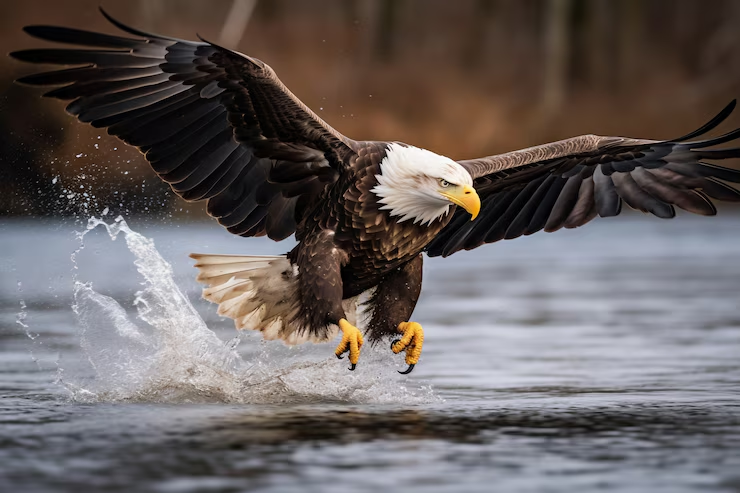Birdwatching enthusiasts and nature lovers alike have long marveled at the beauty and mystery of birds. Among the myriad of avian wonders, the Hancock bird holds a special place, captivating observers with its unique features and behaviors. Whether you’re a seasoned birdwatcher or just beginning your ornithological adventures, understanding the Hancock bird can enrich your nature experiences. This post will take you through everything you need to know about this remarkable creature in 2024, from its habitat and physical characteristics to its behaviors and conservation status.
The Hancock Bird’s Natural Habitat
The Hancock bird is often found in diverse habitats across the globe, showcasing its adaptability. Whether in dense forests, serene wetlands, or bustling urban areas, these birds have learned to thrive in varied environments. Their ability to adapt to different surroundings makes them a subject of interest for ecologists and bird enthusiasts.
In forested regions, the Hancock bird takes advantage of the canopy cover for nesting and feeding. The lush greenery provides ample resources for sustenance and protection against potential predators. During certain seasons, these birds migrate to wetlands, where they find an abundance of food in the form of aquatic insects and small fish. This seasonal movement is a spectacular sight that draws bird watchers from all over the world.
Urban areas also host small populations of Hancock birds, where they have adjusted to coexist with human activity. Their presence in cities highlights their resilience and resourcefulness in finding food and shelter even amidst concrete landscapes. Observing these birds in urban settings offers unique opportunities to appreciate their adaptability and tenacity.
Identifying the Hancock Bird
Identifying the Hancock bird can be a rewarding experience for bird watchers, as it boasts several distinctive physical traits. One of the most striking features is its vibrant plumage, which can range from deep blues to bright yellows, depending on the subspecies. This kaleidoscope of colors not only makes the Hancock bird a favorite among wildlife photographers but also plays a role in mating displays and territorial defense.
In addition to its colorful feathers, the Hancock bird is renowned for its melodic songs. These vocalizations are unique to each individual, serving as a means of communication between members of the same species. By listening closely, bird enthusiasts can distinguish between calls used for attracting mates, warning of danger, or marking territory.
The Hancock bird’s flight pattern is another identifier, characterized by rapid wingbeats followed by short glides. This distinctive movement aids in recognizing the bird even from a distance. Observers can often spot these birds in flight during their characteristic foraging trips or when they are moving between feeding sites and nests.
Diet and Feeding Habits
The diet of the Hancock bird is as varied as its habitats, making it an omnivorous feeder with a preference for insects and seeds. In forested areas, these birds primarily consume insects found within tree bark or on leaves. Their keen eyesight and dexterous beaks allow them to capture prey efficiently, contributing to their role in controlling pest populations.
In wetland environments, the Hancock bird’s diet shifts towards aquatic invertebrates. Wading through shallow waters, they use their sharp beaks to hunt small fish and crustaceans. This diet not only provides nutrition but also helps maintain the ecological balance within these ecosystems by managing prey populations.
Urban-dwelling Hancock birds have adapted to include human food sources in their diet. They often forage in parks and gardens, taking advantage of seeds and fruits left unattended. Their ability to diversify their diet based on available resources showcases their remarkable adaptability and resilience.
Breeding and Nesting Behaviors
The breeding season for the Hancock bird is a time of vibrant activity, marked by elaborate courtship displays and nest-building. These behaviors are not only fascinating to observe but also critical for the continuation of the species. During this period, males showcase their colorful plumage and perform intricate dances to attract potential mates.
Once a pair forms, they collaborate on building a nest, often choosing secluded areas within their habitat to ensure the safety of their eggs. Nests are typically constructed using twigs, leaves, and feathers, providing a secure environment for the incubation of eggs. Observing these nests offers insights into the resourcefulness and ingenuity of the Hancock bird.
After the eggs hatch, both parents share the responsibility of feeding and protecting their young. This cooperative parenting ensures the survival of the chicks, who rely on their parents for nourishment until they are capable of fending for themselves. The dedication and teamwork displayed by these birds during the breeding season highlight the importance of family bonds in avian life.
Migration Patterns of the Hancock Bird
Migration is a significant aspect of the Hancock bird’s life cycle, with many populations undertaking long journeys between breeding and wintering grounds. These migrations are driven by changes in temperature and food availability, prompting the birds to seek out more favorable conditions for survival.
Tracking the migration patterns of the Hancock bird provides valuable data for ornithologists studying climate change and its impact on wildlife. These movements also present opportunities for bird watchers to witness large flocks in flight, offering breathtaking views of avian grace and coordination.
Conservation efforts often focus on preserving critical stopover sites along migration routes, ensuring that the Hancock bird has access to essential resources during its travels. By understanding and supporting these migrations, we can contribute to the safeguarding of this remarkable species for future generations.
Conservation Status and Efforts
While the Hancock bird is not currently considered endangered, habitat loss and environmental changes pose significant threats to its populations. Conservationists are actively working to protect these birds through habitat preservation and restoration initiatives. By maintaining the integrity of forests, wetlands, and urban green spaces, we can support the diverse habitats that the Hancock bird relies on.
Public awareness campaigns also play a vital role in conservation, educating communities about the importance of protecting local wildlife. Engaging with bird enthusiasts and citizen scientists allows for collaborative efforts in monitoring Hancock bird populations and advocating for policy changes that benefit biodiversity.
Research continues to be a fundamental component of conservation strategies, with scientists studying the impacts of climate change on the Hancock bird’s habitat and behavior. Through collaboration across disciplines, we can develop comprehensive plans to ensure the long-term survival of this extraordinary species.
The Role of the Hancock Bird in Ecosystems
The Hancock bird plays a crucial role in maintaining the health and balance of ecosystems. As both predator and prey, it contributes to regulating insect populations while providing sustenance for larger predators. This dynamic position within the food web illustrates the interconnectedness of all living organisms and the importance of preserving biodiversity.
In addition to its role in pest control, the Hancock bird aids in seed dispersal, supporting plant regeneration and forest growth. By consuming and excreting seeds across their territories, these birds facilitate the spread of various plant species, contributing to the overall resilience of their habitats.
Understanding the ecological significance of the Hancock bird emphasizes the need for conservation efforts that protect not only individual species but also the intricate networks that sustain life on Earth. By valuing and preserving these relationships, we can promote a healthier, more balanced natural world.
Citizen Science and Bird Watching
Citizen science initiatives offer valuable opportunities for individuals to contribute to Hancock bird research and conservation. By participating in bird counts, monitoring nesting sites, and recording sightings, amateur bird watchers can provide essential data that supports scientific studies and informs conservation strategies.
Connecting with local birding groups and organizations allows enthusiasts to share their observations and experiences, fostering a sense of community and camaraderie among those who appreciate the beauty of the natural world. This engagement not only enhances personal knowledge but also strengthens collective efforts to protect the Hancock bird and its habitat.
For those interested in bird watching, the Hancock bird offers endless opportunities for observation and discovery. Whether exploring nearby parks or traveling to renowned birding destinations, enthusiasts can enjoy the thrill of spotting these elusive creatures and learning more about their fascinating behaviors.
The Cultural Significance of the Hancock Bird
Throughout history, the Hancock bird has held symbolic significance in various cultures, representing themes such as freedom, transformation, and resilience. Its striking appearance and behaviors have inspired countless works of art, literature, and folklore, enriching our collective imagination and appreciation for the natural world.
In some cultures, the Hancock bird is associated with spiritual beliefs and rituals, serving as a messenger or guide between the earthly and divine realms. These cultural connections highlight the profound impact that wildlife has on human society, shaping our perceptions and values.
By exploring the cultural significance of the Hancock bird, we gain a deeper understanding of the ways in which nature influences our lives and the importance of preserving these connections for future generations. Celebrating the beauty and symbolism of this remarkable species encourages a greater appreciation for the diverse tapestry of life on Earth.
Technological Advances in Bird Research
Advancements in technology have revolutionized the study of the Hancock bird, offering new insights into its behavior, ecology, and conservation. Tools such as GPS tracking, remote sensing, and bioacoustic monitoring allow researchers to gather detailed data on the movement patterns and vocalizations of these birds, enhancing our understanding of their complex lives.
Collaboration between scientists, technologists, and citizen scientists has led to the development of innovative platforms that facilitate data collection and analysis. These efforts not only advance scientific knowledge but also empower individuals to engage with and contribute to wildlife research.
The integration of technology in bird research underscores the importance of interdisciplinary approaches to solving environmental challenges. By harnessing the power of innovation, we can develop more effective strategies for conserving the Hancock bird and other vulnerable species in our rapidly changing world.
Engaging with Local Wildlife
Connecting with local wildlife, such as the Hancock bird, offers countless benefits for both individuals and communities. Observing and appreciating the natural world fosters a sense of wonder and curiosity, encouraging lifelong learning and exploration. Additionally, spending time in nature has been shown to improve mental and physical well-being, promoting a healthier, more balanced lifestyle.
Engaging with wildlife also strengthens community bonds, as individuals come together to share their experiences and collaborate on conservation initiatives. By participating in local events, workshops, and citizen science projects, people can deepen their connection to the natural world and contribute to the protection of valuable ecosystems.
Through engagement with local wildlife, we cultivate a sense of responsibility and stewardship for the environment, inspiring actions that support the preservation of our planet’s rich biodiversity. By nurturing these connections, we create a brighter future for both people and wildlife.
Conclusion
The Hancock bird remains a captivating subject for bird watchers, conservationists, and nature enthusiasts alike. Its unique features, behaviors, and ecological significance make it an important part of our natural world. By understanding and appreciating the Hancock bird, we can contribute to its conservation and ensure that future generations have the opportunity to marvel at its beauty.
For those seeking to explore more about the Hancock bird and engage with local wildlife, numerous resources and opportunities await. From joining birding groups and citizen science initiatives to participating in conservation efforts, there are countless ways to connect with and support the natural world.
As we continue to learn about and protect the Hancock bird, we not only enrich our own lives but also contribute to the preservation of the planet’s diverse ecosystems. Together, we can ensure a vibrant future for all living beings.

